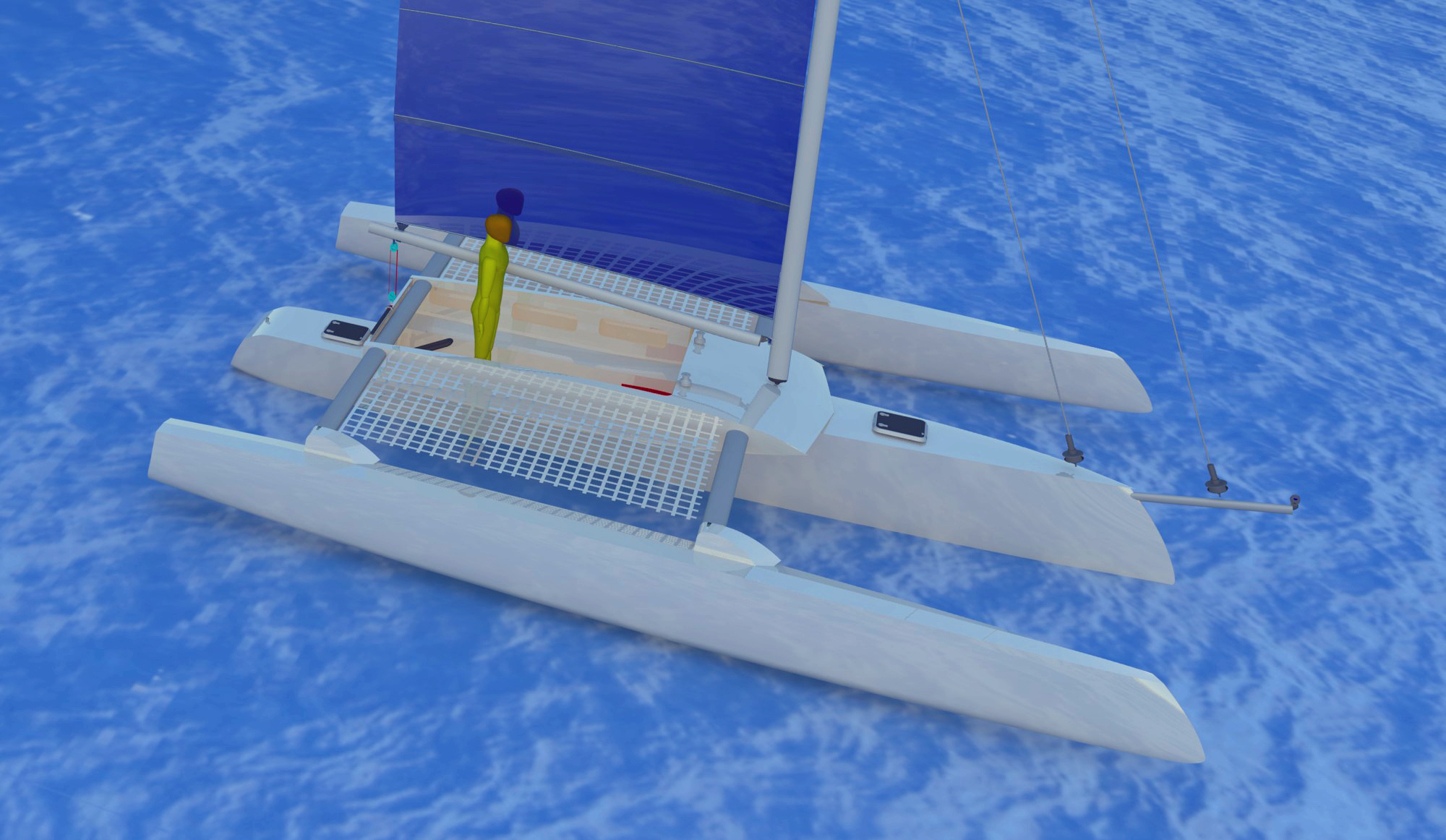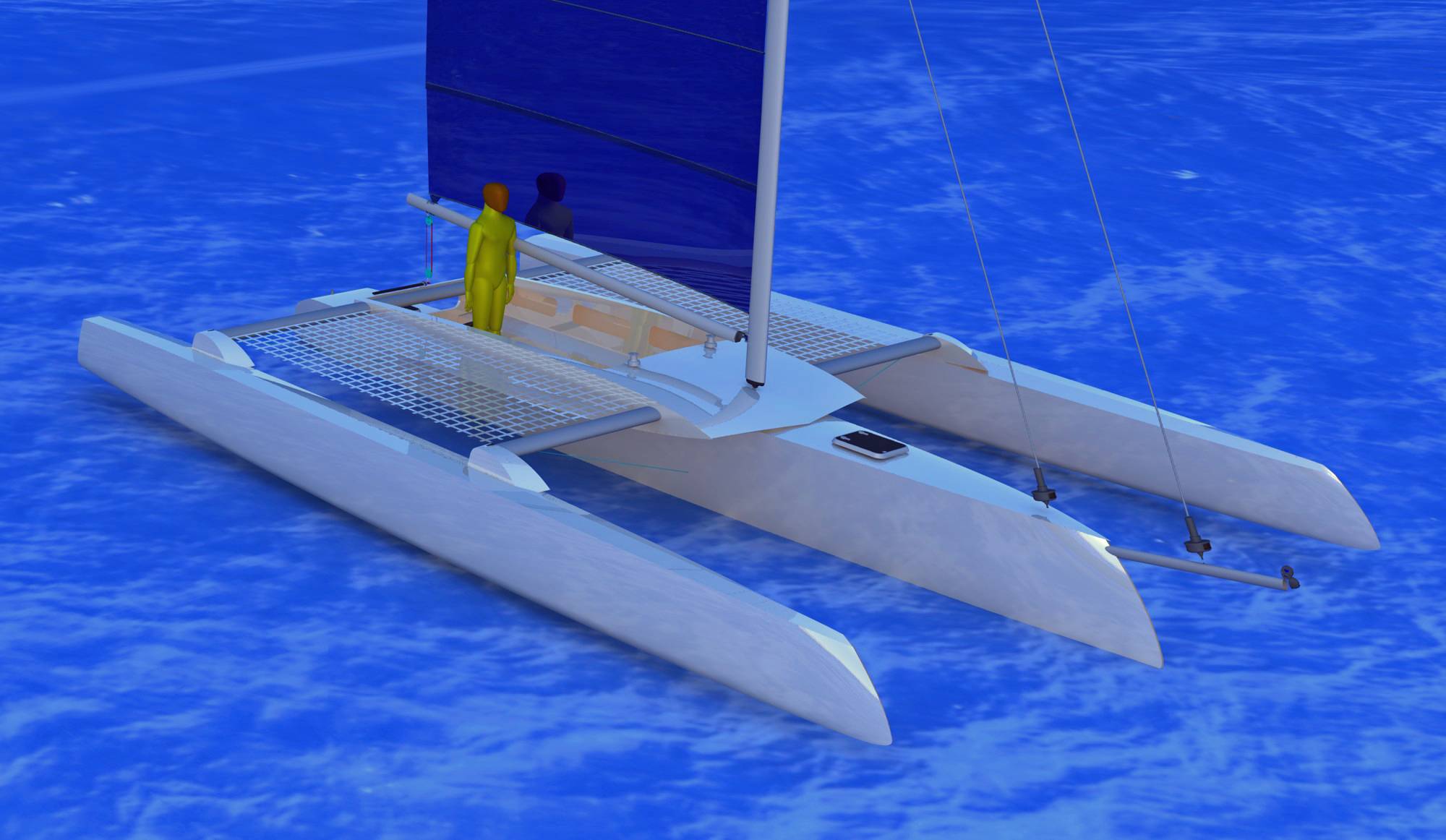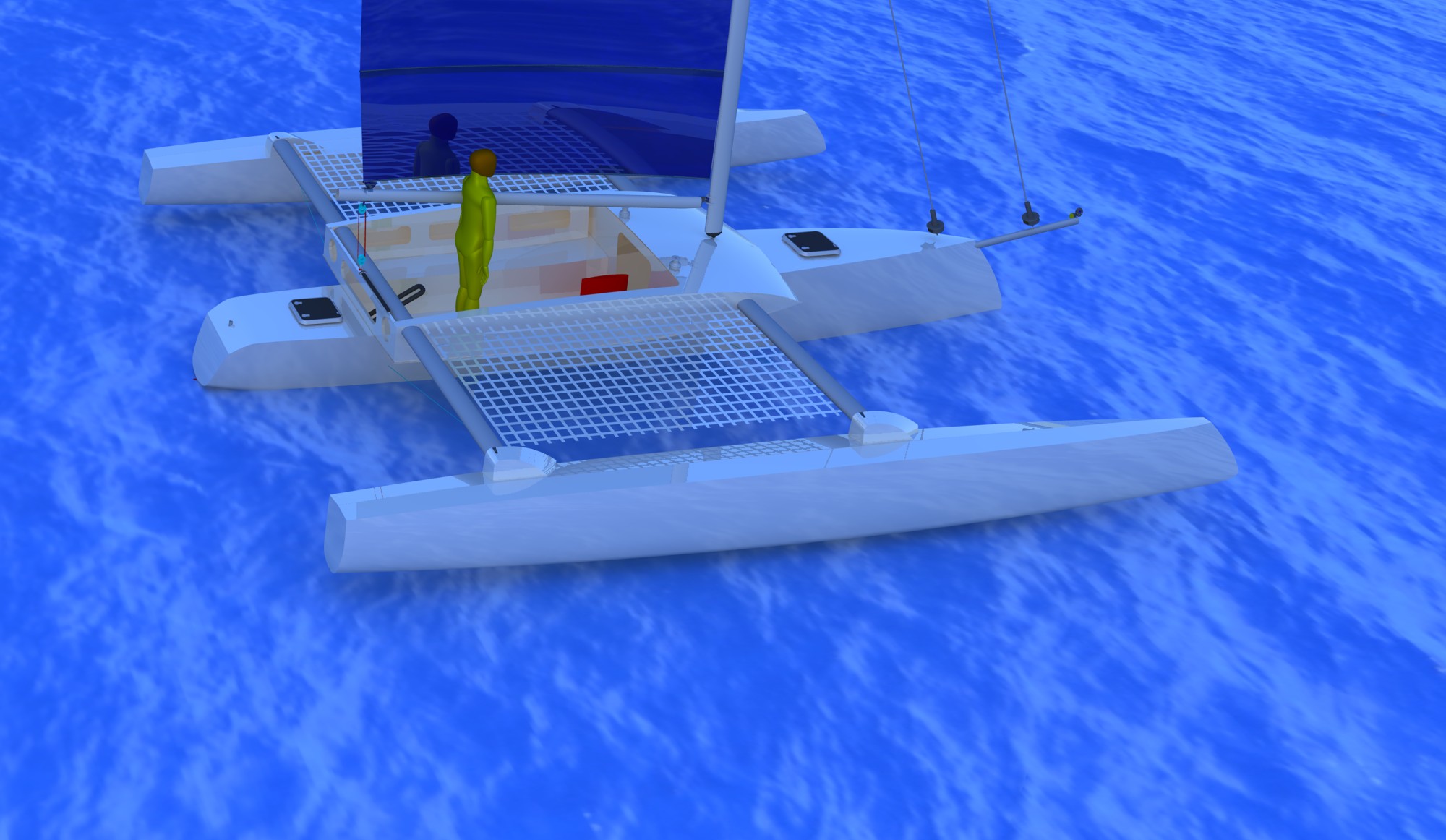I finally got the first run of modeling the updated 23 daysail trimaran. Version B will have ama rudders and the even hotter version C will have foils. It is a developed plywood/epoxy unit with core vacuum bagged onto the flat surfaces needing that. And carbon fiber where it helps. At around 360 kg lightship weight, it can be built for around $5000 us in construction materials. The connecting beams should be carbon mast sections. The camper version comes next.



Long time tri owner:
I think Kurt (who is very pragmatic) would say that the requirements you are listing are better suited to a cruising catamaran than a trimaran. They just carry load better and therefore trimarans have moved more to the performance end of the scale. I guess the modern incarnation of what you are talking about would be something like a Neel trimaran which does maximize the useable space onboard. It’s a fairly niche market though and most people would just buy a catamaran in preference.
Kurt:
After reading Geoffrey and Bob comments above I was struck with an idea that you could use to make this 23′ design both trailerable and fuller through the mid ship area. On your 31′ cruiser in the Multihull Studio you incorporated swinging-folding connectives between the main hull and amas. The tugboat rubber bushing provide the durable and strong pivot on the main hull at front and back of cockpit. The curvaceous connectives without the wire stays make it sleek, sexy and trailerable. I’m not so sure you need to incorporate the sliding components on the amas for the sake of simplicity and cost. Just an idea that I would embrace as a perspective builder-buyer of this modern evolving design.
Do you, or have you any time recently designed an actual cruising trimaran?
I mean a tri over 34 feet (so as to have load carrying capacity), one that can handle an all chain rode for the primary anchor. And please, no reverse bows or bow geniker stut that precludes easy access to deploying/retrieving the anchor.
A tri that has integral protection of the cockpit from wind,sun,rain .. from all directions. It doesn’t need to have more than sitting headroom. It does need to have opening forward windows, fairly vertical such as to minimize greenhouse effect.
A cockpit easily enclosed with side/rear mesh to keep out bugs when anchored.
A tri with a foot/18 in. wide solid walkway alongside the main hull such that one can walk forward to work the sail controls on the mast without traversing a trampoline.
A tri without the barely there crossbeams so as to provide some actual deck space to live and operate on for the liveaboard cruiser that might go days without leaving the boat.
Better yet if those cross beams can house a flush embedded anchor locker for a secondary anchor (on one side) and a parachute sea anchor and its dedicated rode on the other side)
Aft cross beams would house a drogue with its rode, and the other side housing the stern anchor with its rode.
A tri designed such that it is easy to deploy & retrieve a dinghy/kayak/SUP off the aft beam, manually, without need for a dinghy crane.
A tri with plenty of opening ports (forward facing are best) such as to be livable in a hot climate. I note that Aussies Schonning and Grainger now design their cats utilizing such design.
I could go on, however I can state that all I see from your designboard (regardless of size) are tri’s meant for the dilettante sailor with bucks who cruises his tri for a week or month then retreats to his land home.
And it isn’t only you. Tony Grainger, Farrier, and the French all seems focused on designs such that the owner can post a You Tube video of his speedometer at 18 knots.
Useless for an actual liveaboard cruiser who wishes the seakeeping ability of a tri, the deckspace of a tri (to carry dinghy/kayak/SUP low & flush on the tramps, and wishes to get from anchorage to anchorage with as little fuss as possible and do it primarily under sail.
Perhaps there is just not a market for such designs. Is that it?
You design for the market and the market primarily wants day sailors or 200 mile plus a day bragging rights boats?
It seems to me that cruising tris ended with the Jay Kantola/Searunner/Cross designs of 40 years ago.
Interesting, can it be made easily trailerable? Currently looking at boat options for when the mast on my F31 is too heavy fro me to handle.
Kurt:
Very attractive update to the 23′ design. I’m not much of a pocket camper guy but really look forward to seeing renderings of the upgraded ‘B’ version and hot rod star ship foiling ‘C’ versions of this sailboat.
As always looking forward to seeing your designs evolve and grow. Keep up the great work.
Tom Edwards
Awesome! The camper version for sure would be of interest. I also wonder if it could be done more like the Trikala style without going to a fully molded composite. It would be a bit more bulbous and potentially have a lot of twist in the upper hull area where the bow from vertical widens to where the curved part of the CM shelves under the mid section and cockpit. The goal would be a bit more volume in the bow to mid section for the berth and making the shape flow. I recall that Chris Andersoon designed the catamaran with all the CM profiles mated on the topsides and decks. I wouldn’t suggest going that far as the deck would be the standard flat arch. I really would like to build something like that in a 23′.
http://multihullblog.com/2014/04/chris-andersons-20m-catamaran/